Hip Flexion And Extension
Table of Contents
What is a Hip Flexion And Extension?
Hip flexion and extension are fundamental movements of the hip joint, which plays a crucial role in various activities like walking, running, jumping, and sitting. Understanding hip flexion and extension is essential for assessing and improving functional mobility, sports performance, and rehabilitation.
Hip flexion refers to the movement of bringing the thigh bone (femur) closer to the front of the body. This movement is typically initiated by the contraction of the hip flexor muscles, including the psoas major, iliacus, and rectus femoris. During hip flexion, the angle between the thigh and the torso decreases, allowing activities such as lifting the knee, stepping forward, or performing sit-ups.
Conversely, hip extension involves moving the thigh bone away from the front of the body, thereby increasing the angle between the thigh and the torso. Hip extension is predominantly carried out by the gluteus maximus, the largest muscle in the buttocks, along with other hip extensor muscles such as the hamstrings (biceps femoris, semitendinosus, semimembranosus), adductor magnus, and the posterior fibers of the gluteus medius.
Both hip flexion and extension are integral to maintaining balance, stability, and proper alignment during various activities. The coordination of these movements is vital for walking, as hip flexion propels the leg forward while hip extension pushes the body forward.
Maintaining flexibility, strength, and stability in the hip flexor and extensor muscles is crucial for preventing injuries, improving athletic performance, and optimizing overall movement patterns. Regular stretching and strengthening exercises targeting these muscle groups can help improve range of motion, reduce muscle imbalances, and enhance functional capabilities.
It’s important to note that hip flexion and extension can be affected by factors such as age, sedentary lifestyle, muscle imbalances, and certain medical conditions.
Hip Flexion
What is Hip Flexion?
- Hip flexion refers to a movement that brings the thigh or lower leg closer to the front of the body, which decreases the angle between the thigh and the body. It is one of the main movements of the hip joint and is necessary for various activities such as walking, running, and sitting.
The hip joint is a ball-and-socket joint formed by the femur (femur) and pelvis. When you flex the hip, the muscles responsible for this movement contract, causing the thigh to move up and forward.
Several muscles contribute to hip flexion, including the iliopsoas (consisting of psoas major muscle & the iliacus muscle), rectus femoris (muscle in the quadriceps group), and tensor fasciae lathe (muscle in the hip and thigh). These muscles work together to flex the hip joint and initiate movements such as lifting the knee, bringing the thigh to the chest, or actions such as kicking or stepping forward.
It is important to note that hip flexion is only one of the movements that occur in the hip joint. Other movements include hip extension (moving the thigh backward), abduction (moving the thigh away from the midline), adduction (moving the thigh toward the midline), and rotation. Together, these movements allow a wide range of motion and functionality in the hip joint.
Hip Flexors Muscles
The hip flexors are a group of muscles in the front of the hip joint that is primarily responsible for hip flexion and other movements such as hip stabilization and pelvic control.
Main Hip Flexors Muscles
- Iliopsoas: The iliopsoas is a combination of two muscles – the psoas major and the iliacus – that work together to flex the hip joint. The psoas major originates from the lumbar vertebrae of the lower spine and the iliac spine of the ilium. Both are inserted into the femur (thigh). Iliopsoas is one of the strongest hip flexors and is involved in activities such as walking, running, and bringing the thigh to the chest.
- Rectus femoris: Rectus femoris is one of the quadriceps muscles of the front of the thigh. It passes over the knee and hip joints. In addition to knee extension, the rectus femoris also helps in hip flexion. It originates from the ilium (hip bone) and attaches to the patella (knee bone) and tibia (shin bone).
- Sartorius: Sartorius is a long, thin muscle that runs diagonally across the front of the ham. It originates from the anterior superior iliac spine (ASIS) of the pelvis and is located on the medial surface of the tibia. The sartorius muscle acts as a hip flexor, abductor, and external rotator, contributing to hip flexion and other movements such as crossing the legs.
- Tensor Fasciae Larae (TFL): Tensor fasciae lathe is a small muscle located on the lateral side of the hip. It originates from the iliac spine (top of the pelvis) and joins the iliotibial zone (a thick group of connective tissue on the outer part of the thigh). Although its main function is to abduct the hip (move the thigh away from the midline), it also helps flex the hip.
These muscles work together to facilitate movements such as walking, running, climbing stairs, and lifting the knee. They play an important role in maintaining proper posture and pelvic stability. It is important to keep these muscles balanced and flexible to prevent hip imbalance or injury.
Range of Motion of Hip Flexion
Hip flexor range of motion varies from person to person and can be affected by factors such as age, flexibility, and joint health. The normal range of motion for adults in hip flexion is about 120 degrees on average, which means that the thigh can be lifted forward and upward at an angle of about 90 degrees with the body.
However, it is important to note that range of motion can vary greatly from person to person. Some people may have greater flexibility and achieve a greater range of motion, while others may have limited flexibility due to factors such as tight muscles, joint restrictions, or past injuries.
It’s also worth noting that hip flexion can be affected by other factors, such as hip position and spinal alignment. For example, hip flexor tightness or lower back restrictions can limit the range of motion during the hip flexion phase.
Maintaining proper hip flexibility is important for a variety of activities and exercises, such as walking, running, squatting, and certain athletic movements. Stretching exercises and regular physical activity that involves hip flexion can help improve and maintain flexibility in this range of motion. If you are concerned about your hip flexibility or have limitations in hip flexion, it is recommended that you consult a physician or physical therapist for proper evaluation and guidance.
How to Check the ROM Of Hip Flexion
You can check your hip flexion range of motion by taking a simple measurement called the hip range of motion (ROM). This can be done as follows.
- Preparations: Find an open space where you can lie comfortably and wear loose or tight clothing that allows for movement. You may also need a partner to help you measure.
- Lying down: Lie on a flat surface, such as a rug or bed, with your legs fully extended.
- Starting position: keep one leg flat on the surface while bending the other leg at the knee joint, bringing the knees to the chest. This is the starting position for measuring hip flexion ROM.
- Measurement: With a partner, gently grasp the thigh of the bent leg above the knee joint and gently press down to stabilize the thigh.
- Movement: Keep the knee bent and slowly raise the thigh to the chest, trying to bring the knee as close to the chest as possible without discomfort or pain.
- Recording measurements: When you have reached your maximum comfort zone, your partner can measure the angle between your thigh and the surface with a goniometer or similar device. The goniometer must be aligned with the axis of the femur (femur) and the hip joint.
- Repeat on the other leg: Repeat the measuring process on the opposite leg and compare the results.
- Interpretation: The normal range of hip flexion ROM varies according to factors such as age, flexibility, and individual differences. In general, the hip flexion ROM of a healthy adult should be around 120-140 degrees. It is worth noting that if you have a history of hip disease or injury, it is recommended to consult a doctor, such as a physiotherapist or an orthopedist, who can provide a more in-depth assessment and guidance on how to measure hip flexion.
Exercise For Hip Flexion
Improving hip flexibility can be beneficial in many activities that require hip flexibility and mobility. Here are some exercises to help improve your hip flexion:
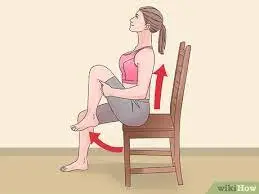
- Lying Rooster March: Lie on your back with your knees bent and your feet on the floor. Brace your core and lift one leg off the ground, bringing your knee to your chest. Hold for a few seconds then gradually lower your leg. Repeat on the other side. Do 10-12 repetitions on each leg.
- Standing hip flexion: Stand tall with your feet apart and place your hands on a firm surface if needed. Lift one leg up by bending the knee and bringing it as close to the chest as possible, maintaining balance. Hold for a few seconds before lowering your legs. Repeat on the other side. Aim for 10 to 15 reps on both legs.
- Lunge with hip flexor stretch: Take a lunge position with one leg forward and the other back, making sure the front knee is directly over the ankle. Keeping your back straight, shift your weight forward and feel the stretch in the hip flexor of your back leg. Stretch for 20 to 30 seconds, then switch legs and do it again. Do 2-3 sets for each leg.
- Seated knee-to-chest stretch: Sit on the edge of a chair or exercise bench with your feet on the floor. Step back slightly, take one knee and bring it to your chest, and feel the stretch in your hip flexors. Hold the stretch for 20-30 seconds, then release and switch legs. Repeat 2-3 times with both legs.
- Standing leg swings: Stand next to a wall or strong object for support. Swing one leg back and forth like a pendulum while keeping your body upright. Start with small swings and gradually increase the movement as you feel more comfortable. Do 10-12 swings with both legs. Remember to warm up before doing these exercises and listen to your body. If you feel pain or discomfort, stop exercising and consult your doctor. Additionally, it is always a good idea to consult with a qualified exercise professional or physical therapist to ensure that the exercises are appropriate for your individual needs and abilities.
Special Test For Hip Flexion
There are some specific tests that help specifically assess hip flexion. These tests are often used by healthcare professionals to assess hip function in clinical settings. Here are two examples of specific hip flexion tests:
- Thomas test:
The Thomas test is a widely used test to assess hip flexor contracture and joint muscle tension.
Actions:
- Lie on a table or bed with your legs hanging over the edge. – Bring both knees to your chest and hold them with your hands. – Let one leg hang freely while holding the other knee firmly. – Slowly lower the non-stick leg to the table, keeping it as straight as possible. – Observe whether the extended leg lies flat on the table or whether it remains bent at the hip joint. Interpretation: If the thigh of the straightened leg remains above the table, this indicates the limitation of hip flexion, indicating a hip flexor contracture or joint muscle strain.
- 2. Modified Ober test:
The modified Ober test helps assess tensor fasciae latae (TFL) and iliotibial band (IT band) tension or contraction that may limit hip flexion.
- Actions:
- Lie flat on your side with your lower leg slightly bent to support it. – Keep the top straight. – The healthcare worker stands behind you and gently lifts your upper arm. – The leg is then allowed to slowly descend the spine.
- Interpretation:
- If your leg stays elevated or doesn’t drop close to the table, this indicates tension or contracture in the TFL and IT region, which can limit hip flexion. It is important to note that these special tests must be performed by trained professionals who can accurately interpret the results.
Hip Extension
What Is Hip Extension?
- Hip extension refers to a movement that involves extending the hip joint, causing the leg to move backward from the midline of the body. The gluteus maximus and hamstrings (biceps femoris, semitendinosus, and semimembranosus) perform this fundamental action.
During hip extension, the angle between the thigh and torso increases as the leg moves backward. This movement is often used in activities such as walking, running, climbing stairs, and jumping. It is also an integral part of various exercises and sports movements, including squats, deadlifts, lunges, and kicks.
Keeping your hip extensors strong and flexible is important for overall lower body strength, power, and mobility. Weak hip extensors can lead to imbalance, reduced athletic performance, and increased risk of injury. Regular exercises that target the hip extensors can improve their strength and function, which contributes to movement mechanics and overall physical performance.
Hip Extensors Muscles
The hip extensors are a group of muscles located in the buttock and back of the thigh that work together to extend the hip joint. These muscles are responsible for movements such as sitting standing, walking, running, and climbing stairs.
Main Hip Extensor Muscles
- Gluteus maximus: This is the largest muscle in the buttocks and the most powerful hip extensor. It is responsible for movements such as rising from a crouching position, pushing the body forward while walking or running, and extending the thigh back.
- Hamstrings: a group of three muscles located on the back of the thigh. These include the biceps femoris, semimembranosus, and semimembranosus muscles. Although the main function of the hamstrings is to bend the knees, they also play an important role in extending the hip. They work with the gluteus maximus to extend the hip.
- Adductor magnus: Although its main function is to adduct the hip (bring the thigh to the midline), the adductor magnus muscle also contributes to hip extension. It is located on the inner thigh and helps to stabilize and extend the hip joint.
- Gluteus and gluteus minimus muscles: These muscles are located on the lateral side of the hip. Although their primary function is to abduct the hip (move the thigh away from the midline), the posterior fibers also help extend the hip.
- Piriformis: Deep in the buttock lies a tiny muscle known as the piriformis. It plays a role in both hip rotation and hip extension. This helps stabilize the hip joint during movements and promotes the overall function of the hip extensors.
It is important to note that these muscles work together to produce coordinated movements and the extent of their involvement may vary according to the specific activity and individual variations. Regular strengthening and stretching exercises that target the hip extensors can help improve their function, stability, and overall hip health.
Range Of Motion Of Hip Extension
Hip extension range of motion (ROM) refers to the degree of motion that can be achieved by extending the hip joint posteriorly. It is measured in degrees and can vary from person to person based on factors such as flexibility, muscle strength, and joint health.
In general, the average range of motion for hip extension in a healthy person is about 20-30 degrees out of a neutral stance. This means that when standing with your legs fully extended, you can move your leg back 20-30 degrees.
However, it is important to note that the actual trajectory may vary from person to person. Factors such as age, fitness, previous injuries, and anatomical variations can affect hip extension. Some people may have more or less range of motion due to these factors.
It is worth mentioning that lack of flexibility or limited range of motion in hip extension can affect various activities such as running, hitting, and performing exercises such as squats or pulse. It is recommended to maintain and improve hip extension range of motion through regular stretching exercises such as hip stretches, lunges, and yoga poses that target the hip flexors and extensors. If you are concerned about your hip range of motion or experience pain or discomfort during hip extension, it is best to consult with a doctor or physical therapist for proper evaluation and personalized guidance.
How to Check the ROM of Hip Extension
Hip extension range of motion (ROM) can be checked using a simple measurement technique. Here’s a step-by-step guide to help you control your hip extension ROM:
- Preparation: Find a flat and stable surface to measure. You may want to wear comfortable clothing that allows for easy movement.
- Starting position: Stand, feet wide apart. Make sure your posture is upright and your hips are in a neutral position.
- Starting Position: Set a reference point on your body to mark your starting position. One common way is to place your hands on your hips with your thumbs pointing forward and your fingers intertwined against your butt. This helps maintain consistency in measuring hip extension.
- Measurement. Start by extending one leg behind you, keeping it straight. Move your leg as much as possible without compensating by leaning your upper body forward or arching your lower back too much. Maintain a natural position throughout the movement.
- Range of motion: As you move your leg back, pay attention to where you feel tension or resistance in your hip. Pay attention to the position of your foot when you reach this point. This is the endpoint of your hip extension.
- Measuring technique: When you have reached the endpoint, you can use a goniometer (a special tool for measuring joint angles) to measure the degree of hip extension. Place the center of the goniometer base on the outside of the hip joint and align it with the axis of the leg. The fixed arm of the goniometer should be parallel to your body and the moving arm should be in line with your leg.
- Reading the measurement: Read the degree of hip extension from the goniometer at the point where the moving arm intersects the stationary arm. This measurement indicates hip extension in degrees of ROM.
- Repetition: Repeat the measurement on the opposite leg to compare the range of motion of the two sides. It is important to note that goniometric measurements are usually performed by health professionals or physical therapists who are experienced in assessing joint motion. If you are unsure of the accuracy or interpretation of your measurements, we recommend that you speak with a doctor to accurately assess your range of motion.
Exercise For Hip Extension
Hip extension is an important movement pattern that involves backward movement of the hip joint, activating muscles such as the glutes and hamstrings. Here are some exercises to help improve hip extension:
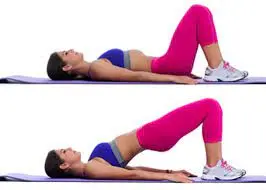
- Glute Bridge: Lie on your back with your knees bent and your feet on the floor. Up until your body creates a straight line from your knees to your shoulders, brace your glutes and lift your hips off the ground.
- Romanian Deadlift: Lie on a mat or table with your legs dangling over the side. Your lower back should be pressed firmly into the surface. 2. Holding your knees with your hands, bring both knees to your chest. 3. Gradually let go of the other leg, allowing it to dangle loosely over the table’s edge. 4. Pay close attention to where the lower Hold the position for a few seconds and then lower your hips. Repeat several times.
- Reverse Lunges: Stand with your feet wide apart and hold a barbell or dumbbell in front of your thighs. Breathe forward from your hips, keeping your back straight and your knees slightly bent. Lower the weights to the floor and feel the stretch in your hamstrings. Return to the starting position by contracting your glutes and extending your hips.
- Step-ups: Stand with your feet hip-width apart and take a step back with one leg, lowering your body until both knees are bent at a 90-degree angle. Push your front foot through your heel and extend your hips to return to the starting position. Repeat with the other leg.
- Kicks: Stand in front of a step or raised platform. Step onto the platform with one foot, press into your heel, and extend your hips to lift your body. Go back down and repeat with the other leg. You can add resistance by holding dumbbells or using a weighted vest. Start on hands and knees, hands directly under shoulders and knees hips. Keeping the knee bent, lift one leg up and move the heel toward the ceiling. Repeat with the opposite leg, lowering the first one back down. Keep in mind to start with a weight or resistance level that pushes you yet enables you to keep good form. If you are new to these exercises or have an injury or limitation, it is always a good idea to consult a healthcare provider or certified trainer before starting a new exercise routine.
Special Test For Hip Extension
A specific test often used to assess hip extension is the Thomas test. The Thomas test assesses the flexibility of the hip flexors, specifically the joint muscle group that can limit hip extension when they are tight. This can be done as follows.
- Lie on a table or mat with your legs hanging over the edge, keeping your lower back pressed against the surface.
- Bring both knees to your chest and hold them with your hands.
- Slowly release the other leg and let it hang freely over the edge of the table.
- Focus on the position of the lower back. It should lie flat against the surface; if it curves or rises, it indicates tight hip flexors.
- Keep one leg bent and slowly lower the extended leg to the floor, trying to fully extend it.
- Monitor movement and any limitations or discomforts experienced during movement.
If you have trouble reaching full hip extension during the Thomas test or feel tightness or discomfort in the front of the hip, this indicates limited hip extension due to the hip flexors. It is important to note that this test primarily assesses the flexibility of the hip flexors and not the strength or mobility of other hip extensors such as the glutes or hamstrings.
Summary:
In summary, hip flexion and extension are fundamental movements of the hip joint that play a significant role in activities like walking, running, and sitting. Hip flexion involves bringing the thigh bone closer to the front of the body, while hip extension moves the thigh bone away from the front of the body. These movements are controlled by specific muscles, including the hip flexors and hip extensors.
Maintaining flexibility, strength, and stability in these muscle groups is important for optimal movement, injury prevention, and enhanced performance. If you have concerns about your hip mobility or experience pain, it’s recommended to seek professional guidance.
FAQs
Hip extension refers to extending the hip mid-swing. hip flexion refers to bending the hip after mid-swing when the leg moves forward before it contacts the ground.
The hip flexors are ilium, psoas major, rectus femoris, and sartorius.
The hip flexor muscle is a muscle that bends the hip, ie. brings the knee closer to the chest. Hip flexion is maximized with a high forward stroke that raises the leg above waist level. Every time you take a step, you use the hip flexors.
The thigh muscle group plays an important role in hip extension and knee flexion. The thigh muscle group consists of the semimembranosus, semimembranosus, and biceps femoris muscles.
The gluteus maximus is the primary muscle that eccentrically controls hip flexion by producing an internal hip extension moment.
The gluteus maximus muscle, a major muscle involved in hip extension and external rotation of the hip joint, receives motor activity from the inferior gluteal nerve.


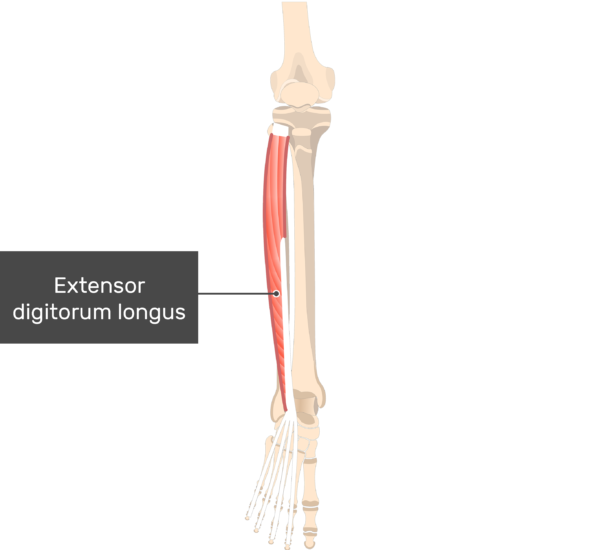
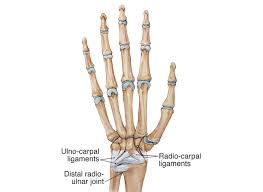

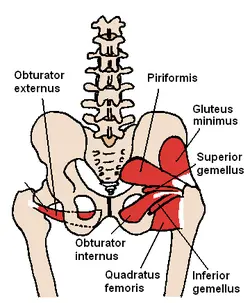
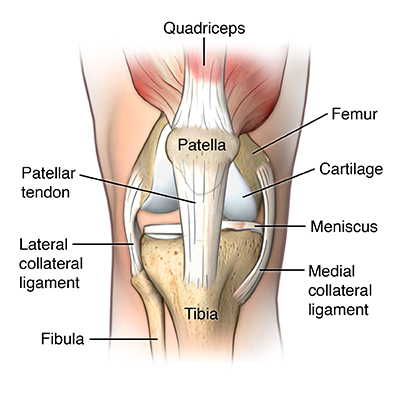
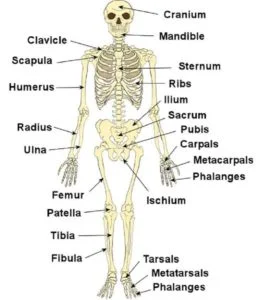
One Comment